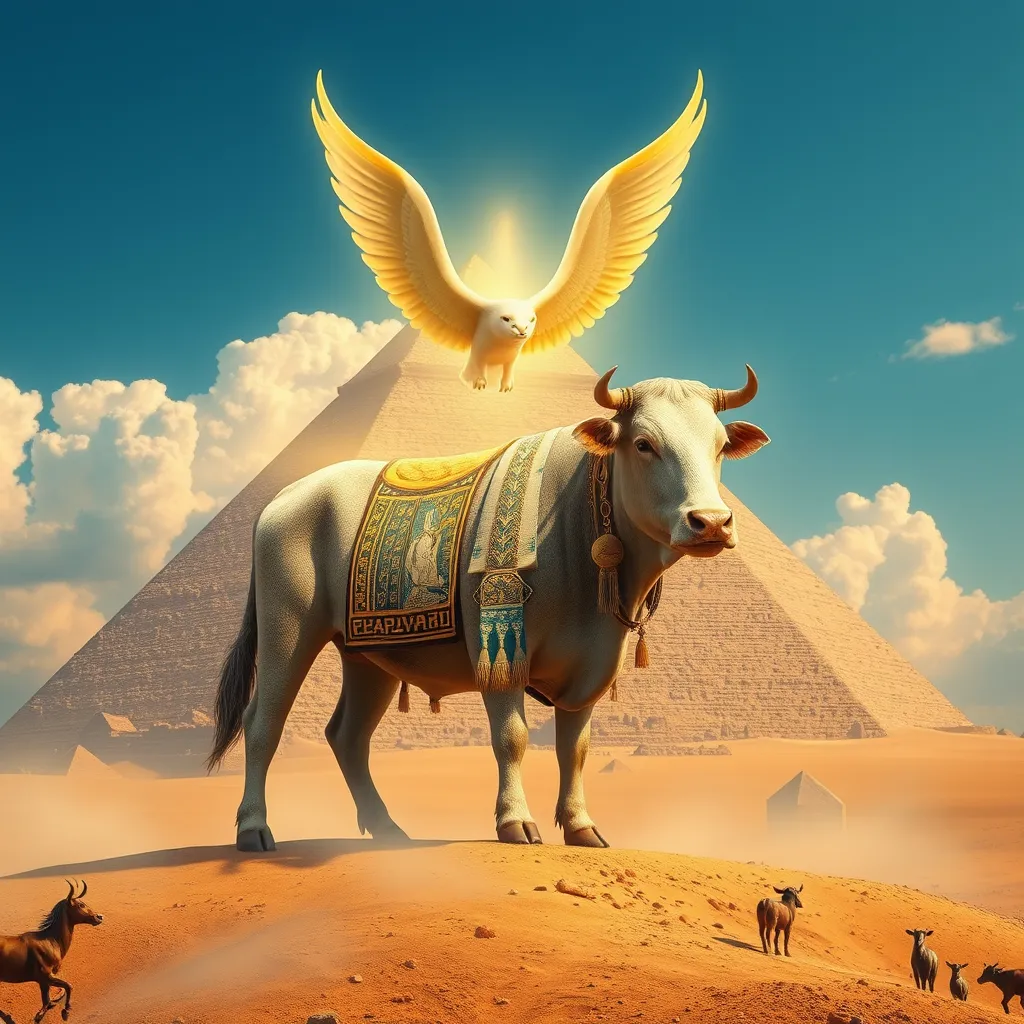The Book of the Heavenly Cow: Unveiling the Creation Myth
1. Introduction to the Heavenly Cow Myth
Creation myths serve a vital role in ancient cultures, providing insights into their beliefs about the universe’s origins and their place within it. Among these narratives, the Book of the Heavenly Cow stands out as a significant Egyptian creation myth that encapsulates the culture’s understanding of life, death, and rebirth.
The Book of the Heavenly Cow is not merely a tale; it is a profound reflection of ancient Egyptian cosmology and spirituality. This myth centers around the goddess Nut, who personifies the sky, and her relationship with the sun god Ra, illustrating the interconnectedness of divine forces in the creation of the world.
2. Historical Background of the Text
The Book of the Heavenly Cow is thought to have originated during the New Kingdom period of ancient Egypt, around the 16th century BCE. This text is often found in various tombs and funerary contexts, indicating its importance in the afterlife beliefs of the Egyptians.
Within ancient Egyptian literature, the Book of the Heavenly Cow holds a unique position, as it combines elements of mythology, theology, and cosmology. It reflects the Egyptians’ intricate understanding of the gods and their influence over the natural world, showcasing the interplay between life and death.
3. Key Themes in the Creation Myth
The Book of the Heavenly Cow encapsulates several major themes that are central to the Egyptian worldview:
- Creation: The birth of the universe and all living things is a fundamental theme, portraying the emergence of existence from chaos.
- Destruction: The myth also addresses the cyclical nature of life, emphasizing that destruction is a precursor to rebirth.
- Rebirth: The narrative illustrates the constant renewal of life, underscoring the Egyptian belief in the afterlife and resurrection.
Additionally, the symbolism of the cow in this myth represents fertility and nurturing. The cow is depicted as a maternal figure, providing sustenance and life to the world, further emphasizing the deep connection between fertility and creation in ancient Egyptian society.
4. The Role of Deities in the Myth
Central to the Book of the Heavenly Cow are key deities that play pivotal roles in the narrative:
- Nut: The goddess of the sky, Nut is depicted as a celestial cow, representing the cosmos and the nurturing aspect of creation.
- Ra: The sun god, Ra, embodies the force of life and creation, and his journey across the sky is a metaphor for the daily cycle of life.
- Osiris: As the god of the afterlife, Osiris symbolizes rebirth and resurrection, reinforcing the theme of life after death.
These deities work in harmony to create and maintain the universe, reflecting the ancient Egyptians’ understanding of the divine order and balance necessary for existence.
5. Narrative Structure and Key Events
The narrative of the Book of the Heavenly Cow unfolds in a structured manner, beginning with the primordial state of chaos. As the story progresses, key events include:
- The birth of the gods from the cosmic waters of Nun.
- The emergence of Nut as the sky goddess, covering the earth.
- The creation of humans from the tears of Ra, highlighting the connection between the divine and humanity.
The myth culminates in a series of events that illustrate the cyclical nature of life, emphasizing the balance between creation and destruction. This narrative structure serves to reinforce the overarching themes of rebirth and the divine order within the universe.
6. Cultural and Religious Significance
The Book of the Heavenly Cow holds immense cultural and religious significance in ancient Egypt. It influenced various aspects of Egyptian beliefs and practices, including:
- Art: The imagery of the heavenly cow and associated deities can be found in tomb paintings, sculptures, and jewelry, symbolizing fertility and protection.
- Literature: The themes and narratives from the Book of the Heavenly Cow inspired other literary works, reinforcing the importance of creation myths in Egyptian storytelling.
- Religious Rituals: Rituals surrounding fertility and agricultural cycles often drew upon the symbolism found in this myth, emphasizing the connection between divine favor and prosperity.
As such, the Book of the Heavenly Cow was integral to understanding the world and the divine for the ancient Egyptians, shaping their cultural identity.
7. Comparative Analysis with Other Creation Myths
When compared to creation myths from other cultures, the Book of the Heavenly Cow reveals both unique aspects and universal themes. For instance:
- Similarity to Mesopotamian Myths: Like the Enuma Elish, the Heavenly Cow myth presents a struggle between order and chaos, highlighting the importance of divine intervention in creation.
- Contrast with Judeo-Christian Creation: Unlike the Judeo-Christian narrative, which emphasizes a singular creation event, the Egyptian myth underscores a cyclical process involving destruction and rebirth.
These comparisons illustrate how creation myths serve similar purposes across cultures while reflecting the distinct beliefs and values of each society.
8. Conclusion: Legacy and Modern Interpretations
The Book of the Heavenly Cow has left an enduring legacy, influencing not only ancient Egyptian culture but also modern interpretations of mythology. Contemporary scholars and artists continue to draw inspiration from this ancient text, exploring its themes of creation, destruction, and rebirth.
In modern literature and art, the symbolism of the heavenly cow and the narratives surrounding it are revisited, allowing for a deeper understanding of ancient beliefs and their relevance in today’s world. The myth remains a testament to the human quest for meaning and the desire to comprehend our origins and existence.




